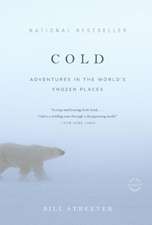The Exploitation of Mammal Populations
Editat de V. J. Taylor, N. Dunstoneen Limba Engleză Paperback – 15 sep 2011
| Toate formatele și edițiile | Preț | Express |
|---|---|---|
| Paperback (1) | 951.47 lei 6-8 săpt. | |
| SPRINGER NETHERLANDS – 15 sep 2011 | 951.47 lei 6-8 săpt. | |
| Hardback (1) | 954.45 lei 6-8 săpt. | |
| SPRINGER NETHERLANDS – 31 aug 1996 | 954.45 lei 6-8 săpt. |
Preț: 951.47 lei
Preț vechi: 1160.32 lei
-18% Nou
Puncte Express: 1427
Preț estimativ în valută:
182.06€ • 190.09$ • 150.68£
182.06€ • 190.09$ • 150.68£
Carte tipărită la comandă
Livrare economică 04-18 aprilie
Preluare comenzi: 021 569.72.76
Specificații
ISBN-13: 9789401071826
ISBN-10: 9401071829
Pagini: 444
Ilustrații: XX, 415 p.
Dimensiuni: 155 x 235 x 23 mm
Greutate: 0.62 kg
Ediția:Softcover reprint of the original 1st ed. 1996
Editura: SPRINGER NETHERLANDS
Colecția Springer
Locul publicării:Dordrecht, Netherlands
ISBN-10: 9401071829
Pagini: 444
Ilustrații: XX, 415 p.
Dimensiuni: 155 x 235 x 23 mm
Greutate: 0.62 kg
Ediția:Softcover reprint of the original 1st ed. 1996
Editura: SPRINGER NETHERLANDS
Colecția Springer
Locul publicării:Dordrecht, Netherlands
Public țintă
ResearchCuprins
One Exploitation of Mammal Populations: Past, Present and Future.- 1 The exploitation, sustainable use and welfare of wild mammals.- 2 Historical dichotomies in the exploitation of mammals.- 3 The wild fur trade: historical and ecological perspectives.- 4 Assessing the impacts of uses of mammals: the good, the bad and the neutral.- Two Harvesting Wild Mammal Populations.- 5 Game ranching.- 6 Status and exploitation of the saiga antelope in Kalmykia.- 7 Capybara use and conservation in South America.- 8 Sustainable use of whales: whaling or whale watching?.- Three Hunting and Its Impact on Wildlife.- 9 The impact of game meat hunting on target and non-target species in the Serengeti.- 10 Subsistence hunting and mammal conservation in a Kenyan coastal forest: resolving a conflict.- 11 The impact of sport hunting: a case study.- 12 Studies of English red deer populations subject to hunting-to-hounds.- Four Wildlife Trade and Conservation.- 13 Zimbabwe: a model for the sustainable use of wildlife and the development of innovative wildlife management practices.- 14 Sustainable utilization: the lessons of history.- 15 Wildlife trade — a conserver or exploiter?.- 16 The tiger — road to extinction.- 17 The exploitation of Asian elephants.- Five Ecotourism: Making Mammal Populations Pay.- 18 The impact of ecotourism development on rainforest mammals.- 19 Ecotourism and mountain gorillas in the Virunga Volcanoes.- 20 Use, misuse and abuse of the orang utan — exploitation as a threat or the only real salvation?.- 21 Elephant family values.- 22 Human disturbance of cetaceans.
Recenzii
...presents clear and well written papers on a variety of aspects of importance and certainly presents a number of issues that require current and future serious consideration...- Journal of Animal Ecology













